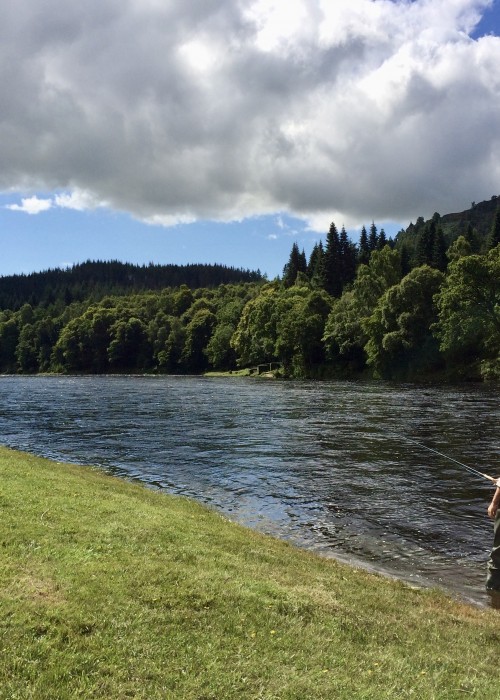
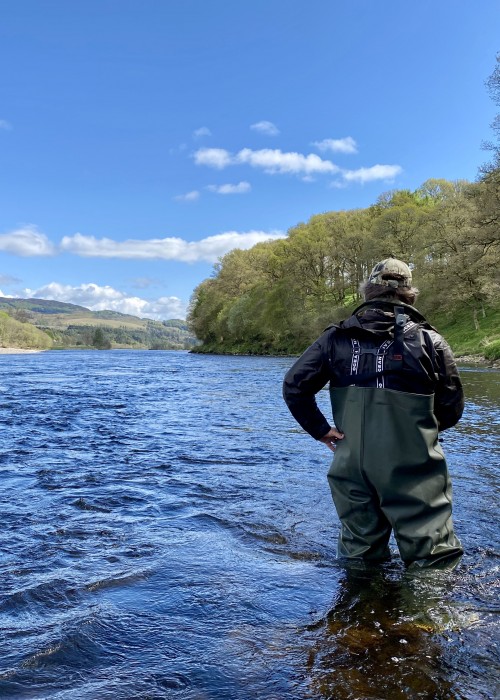
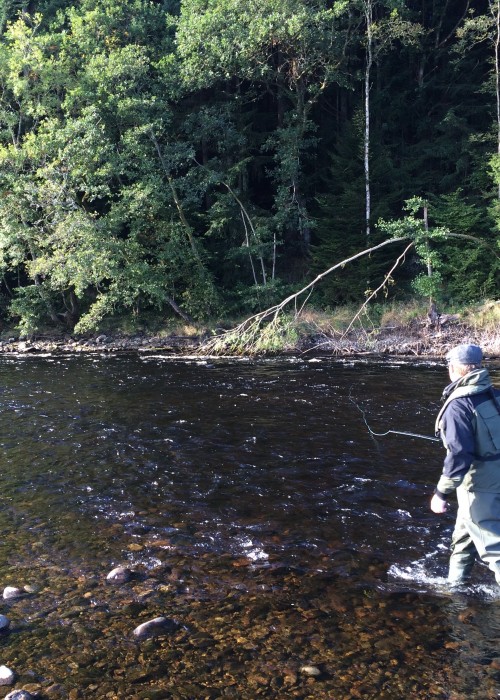
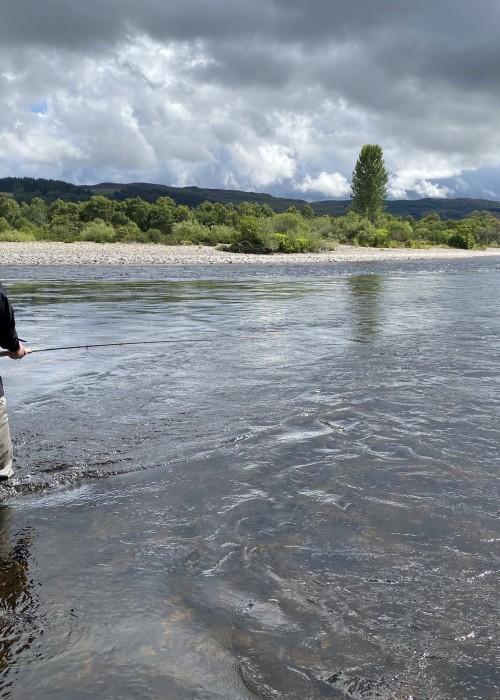
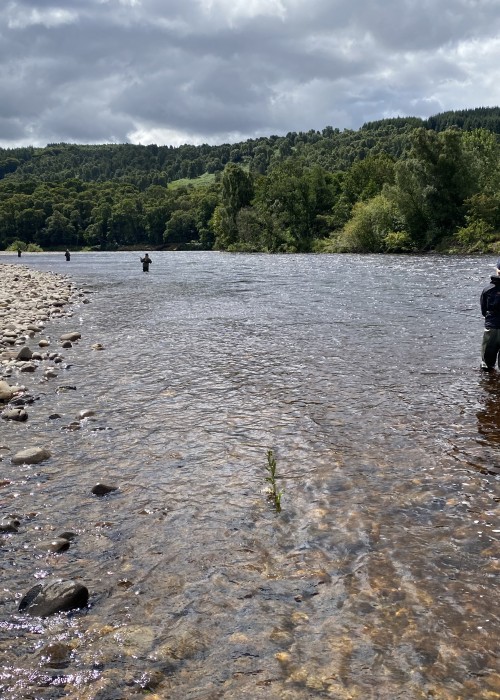
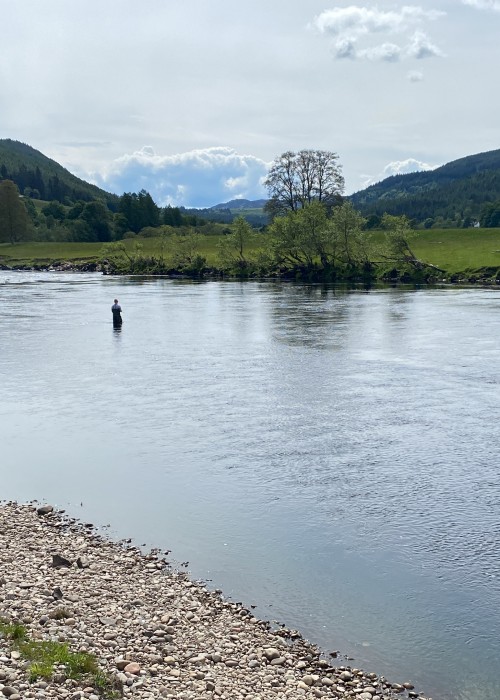
How to understand and learn the importance of good riverbank movement which is a largely untaught yet vital skill when fishing for salmon in Scotland.
Not only is it good salmon fishing etiquette to move through a salmon pool fairly quickly and not hold up other salmon fishers because you’re moving too slowly but it also increases your chances significantly of finding a 'taking' salmon on the bigger Scottish rivers. The best movement I’ve personally found is approx 3 feet between each cast which give you good salmon fly swing separation and doesn’t show the salmon too much of your salmon fly. On that note it is important to realise that by showing a salmon too much of your fly you’re actually conditioning the fish to accept the presence of the fly in the pool. To gain the desired reaction from a salmon it is best to give it a fleeting glance of your fly and a good reason to investigate and hopefully intercept it. This 3 foot movement between each cast can be applied when you’re hand lining in after the fly has come to a stationary position in the stream below you or the split second your fly lands on the water after your forward delivery is applied. A good measure to use to achieve this precise fly swing seperation is to look for a riverbed stone or feature directly under the 1st butt ring on your rod and simply move to it between each cast.
On big salmon rivers like the rivers Tay, Spey Dee & Tweed where you’ve big salmon pools to cover it is important that you fish all of the allocated pools for your morning & afternoon fishing session so this type of movement will also help you with maximising your water coverage. One of the other most important thought processes you can have while salmon fishing is actually concentrating on the speed and depth of your fly rather than getting caught up with thoughts about the arial performance of your fly line which seems to be the main focus of the teaching side of salmon fishing these days. Understand that the speed & depth of your salmon fly is another important component of your salmon fishing approach and that a fly can be slowed up with an upstream mend as it's presented to the river (in fast water) or even speeded up with a downstream mend (in slow water) when required. The most successful salmon fishers are all 'fully' tuned into their water coverage and the depth & speed of their fly throughout the entire fishing day. Book a salmon fishing guide in Scotland and learn the above fly control skills plus many others that are vital for success.